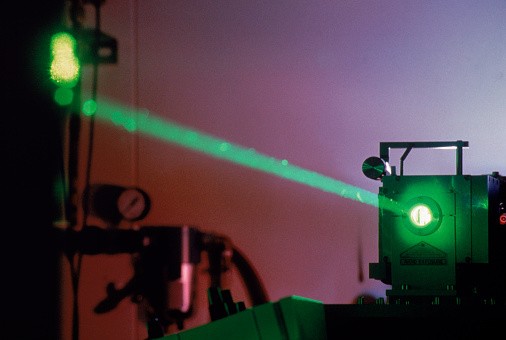
Since the Vietnam War, lasers have accompanied US military forces into combat for communication purposes and for disrupting the optical devices of enemy forces. In order to gain more dominance on the battlefield, the Pentagon decided to utilize a laser based on quantum technology.
Challenges in Using Lasers
Since its introduction in the early 1960s, light amplification by stimulated emission of radiation (laser) has made significant changes in human society. Its uses are almost endless, from communication to surgery and even grocery store checkouts.
This ubiquitous technology, however, still has its own shortcomings. While common lasers get the job done for everyday purposes, they are not good enough to be used in the military. Since a laser is just the optical amplification of light, it fails to overcome adverse conditions such as long distances, extreme temperatures, and atmospheric conditions such as fog.
Lasers can be an integral part of various defense applications, such as surveillance, precision munitions, reconnaissance, and high-speed communications. It is even involved in directed energy weapons that are meant to destroy drones and missiles with concentrated light beams. The problem is that this technology sometimes fails which can come at great cost.
A New Era for Laser Technology
To address these shortcomings, a team of scientists at Washington University in St. Louis and Texas A&M University turn to quantum mechanics to enhance laser performance. Their focus is on the development of a quantum photonic-dimer laser that uses the principles of quantum entanglement.
The research will be made possible through the two-year, $1 million grant from the Defense Advanced Research Projects Agency (DARPA). It will be led by light-manipulation devices expert Jung-Tsung Shen, an associate professor at Washington University.
The quantum photonic-dimer laser will be built around concepts from quantum mechanics. It involves the use of two carefully controlled particles of light to produce a powerful laser beam. When these particles are entangled, they can help protect the lasers from the deleterious effects in challenging environments.
Quantum entanglement refers to a phenomenon where a pair of particles remain connected regardless of resistance. Before they are measured, each particle will enter a state of superposition where they will always be correlated.
The light particles produced by traditional lasers are all in sync. Meanwhile, entanglement enables the creation of pairs of photons known as photonic dimers. Researchers hope that by connecting these light particles together, they can make a more focused and powerful laser beam that can travel longer distances and penetrate fog.
Light particles encode information as they travel, but their journey through the atmosphere can be very damaging. According to Shen, when two photons are bound together, they can still experience the effects of the atmosphere, but they can protect each other and preserve some phase information.
Shen and colleagues discovered that when a photonic dimer is formed by entangling two photons of various colors, the particles take on the behavior of a blue photon. In the future, the research team plans to create a quantum photonic-dimer laser that can produce various states at a rate of one million pairs per second.
RELATED ARTICLE : Physicists Achieve First-Ever Positronium Cooling Using Laser, Advancing Antimatter Research
Check out more news and information on Laser in Science Times.
© 2025 ScienceTimes.com All rights reserved. Do not reproduce without permission. The window to the world of Science Times.












